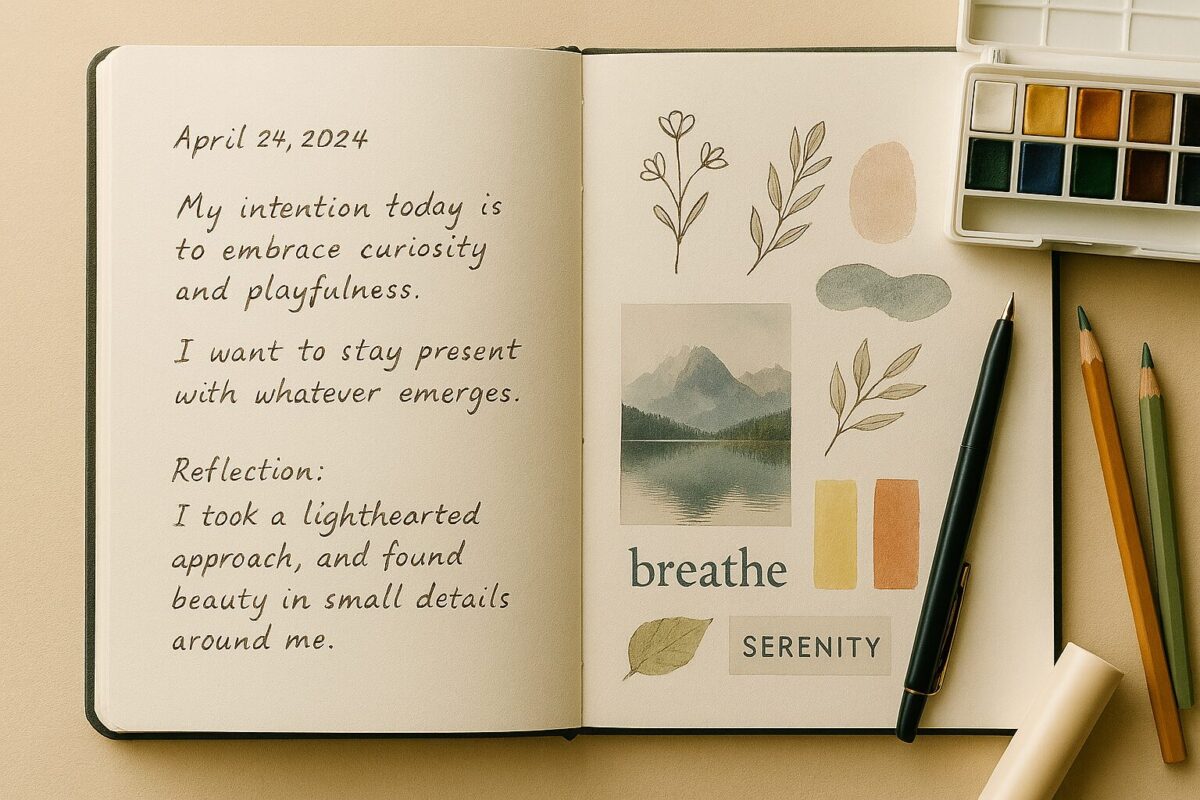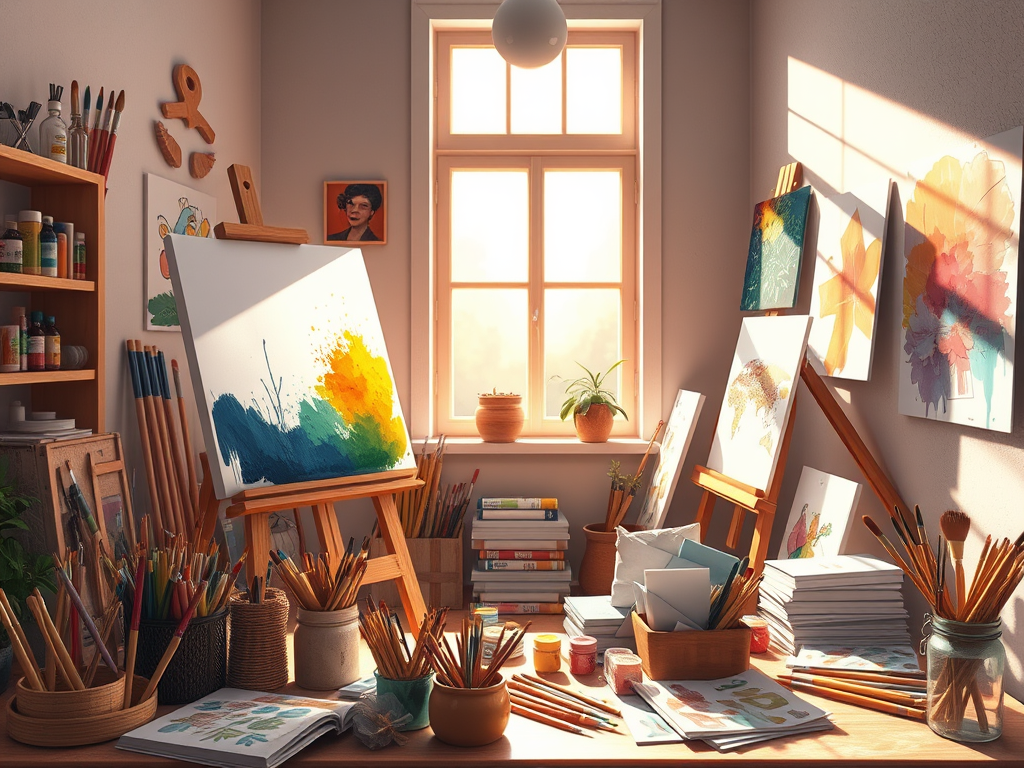Setting an intention for your art practice is like choosing the perfect paintbrush before you start – it shapes everything that follows. Unlike rigid goals that focus on specific outcomes, the art of intention creates a gentle framework that guides your creative spirit while allowing room for discovery and growth. Whether you’re picking up a brush for the first time or you’ve been painting for years, learning to set meaningful intentions can transform your artistic experience from stressful to soul-nourishing.
Key Points Summary
- Intentions focus on inner experience rather than specific outcomes
- Setting clear intentions helps regulate your nervous system and maintain focus
- A dedicated art space enhances mindful creative practice
- Different materials (fluid vs. resistive) create different psychological experiences
- Structured exercises can help beginners develop intention-based art practices
What Makes Intention Different from Goals?
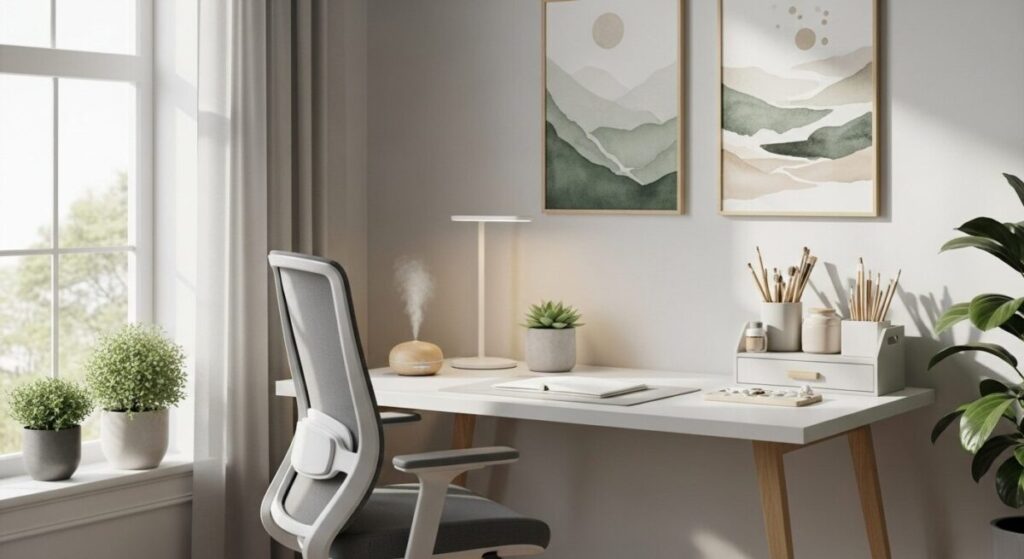
Think of goals as destinations and intentions as the way you travel. A goal might be “I will finish this landscape painting by Friday,” while an intention sounds more like “I want to approach this painting with curiosity and patience.” Goals aren’t bad – they help us accomplish things – but intentions help us experience things.
When you set an intention before creating art, you’re essentially telling your brain what kind of mental state you want to cultivate. This isn’t just feel-good philosophy; it’s based on real science. Your nervous system responds to these mental frameworks, helping shift you from a stressed, hurried state into a calmer, more focused one.
The Science Behind The Art of Intention
Research shows that when we set clear intentions, we activate specific neural pathways that help us maintain focus and stay present. This is especially important in art-making, where our minds often wander to worries about the final result or comparisons with other artists.
Setting intentions works like a gentle anchor for your attention. When your mind starts spiraling into “This doesn’t look right” or “I’m not good enough,” your intention can guide you back to the present moment and remind you why you’re creating in the first place.
How to Set Powerful Intentions for Your Art Practice
Step 1: Reflect and Connect
Before you even look at your art supplies, take a moment to check in with yourself. Find a quiet spot, take three deep breaths, and ask yourself: “What do I really need from this creative session?”
Maybe you need:
- A sense of calm after a stressful day
- Permission to play and experiment
- Self-compassion and patience
- Joy and wonder
- A way to process emotions
There’s no wrong answer here. Your needs might change from day to day, and that’s perfectly normal.
Step 2: Frame in the Positive
Once you know what you need, craft your intention using positive, present-tense language. Instead of focusing on what you want to avoid (“I don’t want to feel frustrated”), focus on what you want to invite in (“I intend to embrace patience and curiosity”).
Here are some examples of powerful intentions:
- “My intention is to be playful and experimental”
- “I intend to approach this process with self-compassion”
- “My intention is to simply enjoy the act of creating”
- “I intend to stay curious about what emerges”
Step 3: Make It Tangible
Write your intention down on a sticky note and place it where you can see it while you work. This simple act makes your intention concrete and serves as a gentle reminder throughout your creative session.
Some artists like to write their intentions at the top of their sketchbook pages or keep a small journal dedicated to their creative intentions and reflections.
Creating Your Creative Sanctuary
Your physical environment plays a huge role in supporting the art of intention. You don’t need a fancy studio – even a small corner of a room can become a sacred creative space when set up thoughtfully.
Essential Elements for Your Art Space
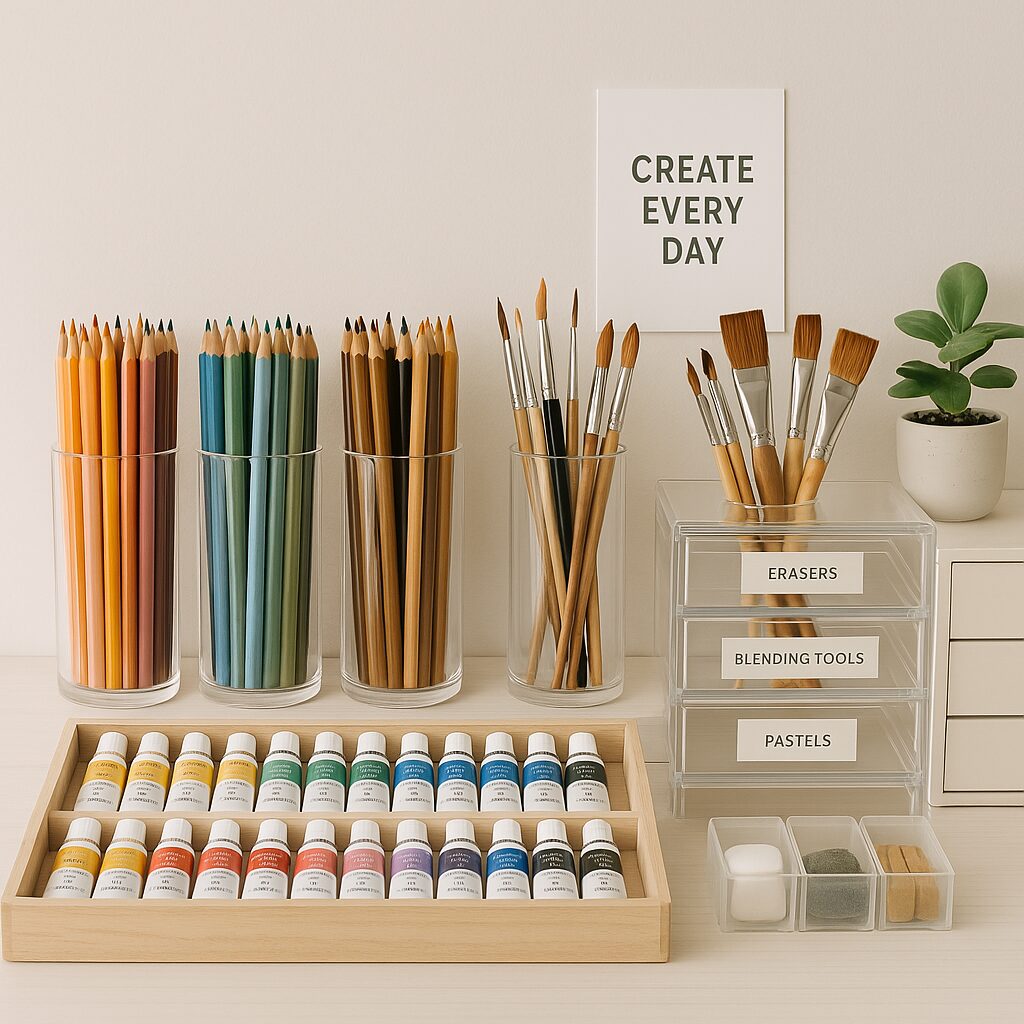
Good Lighting: Natural light is ideal, but if that’s not possible, invest in a good desk lamp that doesn’t cast harsh shadows.
Comfortable Seating: Choose a chair that supports good posture. You’ll be more present and focused when your body feels good.
Organization: Keep your materials organized and easily accessible. When you’re not hunting for supplies, you can stay focused on your intention.
Sensory Elements: Consider adding elements that engage your senses in a calming way:
- Soothing colors on the walls
- A small plant or fresh flowers
- Soft, instrumental music
- A diffuser with calming essential oils like lavender
Understanding Your Materials: Fluid vs. Resistive
The materials you choose can significantly impact your ability to stay connected to your intention. Understanding the psychological effects of different art supplies can help you choose the right tools for your intended experience.
Fluid Materials
These include watercolors, finger paints, soft pastels, and wet clay. Fluid materials are less controllable and tend to create more:
- Emotional and sensory experiences
- Opportunities for letting go and acceptance
- Spontaneous discoveries
- Flow states
Best for intentions focused on: Release, playfulness, emotional expression, letting go of control
Resistive Materials
These include pencils, pens, hard pastels, and firm clay. Resistive materials offer more control and tend to promote:
- Focused concentration
- Problem-solving mindsets
- Detailed work
- Structured thinking
Best for intentions focused on: Patience, precision, mindfulness, building confidence
“The fear of ‘wasting’ costly materials can be a significant barrier to free experimentation. Starting with simple, affordable supplies is an excellent way to begin.”
Art Therapy Research
The Art of Intention: Practical Exercises for Beginners
Here are four structured exercises that combine intention-setting with hands-on art-making. Each exercise includes the psychological reasoning behind it, so you understand not just what you’re doing, but why it works.
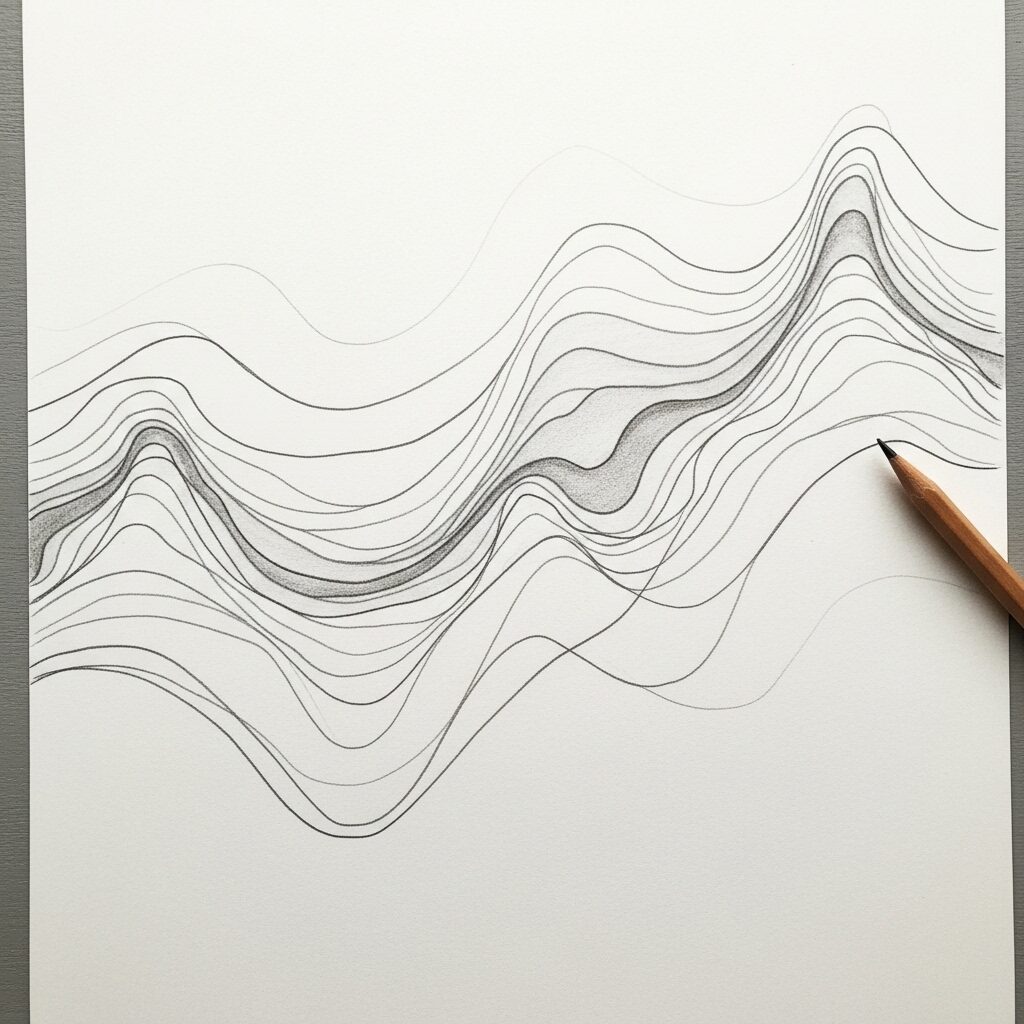
Exercise 1: Drawing the Breath
Materials: Paper and a pen or pencil Intention Focus: Anchoring attention and calming the nervous system
- Set your intention for calm and presence
- Sit comfortably and take a few deep breaths
- Place your pen on paper
- As you inhale, draw a line moving upward
- As you exhale, draw a line moving downward
- Continue for 3-5 minutes, creating a rhythmic pattern
This exercise directly links physical action (drawing) to breathing, creating a powerful feedback loop that helps regulate your nervous system and keeps you present.
Exercise 2: Guided Visualization Painting
Materials: Watercolor paper, watercolors, brush, water Intention Focus: Creating positive feelings and imagination
- Set your intention to cultivate peace and safety
- Close your eyes and visualize a place where you feel completely safe and calm
- Engage all your senses – what do you see, hear, smell, feel?
- Open your eyes and paint the feeling of this place, not a realistic representation
- Focus on colors, light, and emotions rather than details
This exercise helps you translate positive mental images into physical artwork, reinforcing feelings of safety and peace.
Exercise 3: Clay Stress Ball
Materials: Small piece of air-dry clay or modeling dough Intention Focus: Grounding and releasing tension
- Set your intention to release stress and tension
- Hold the clay and close your eyes
- Focus on any stress or tension in your body
- Knead, squeeze, and shape the clay, imagining you’re transferring tension from your body into the clay
- Continue until you feel release
- Observe the final shape without judgment
The tactile nature of clay is naturally grounding, and the physical act of squeezing provides a healthy outlet for anxious energy.
Exercise 4: Intention Collage
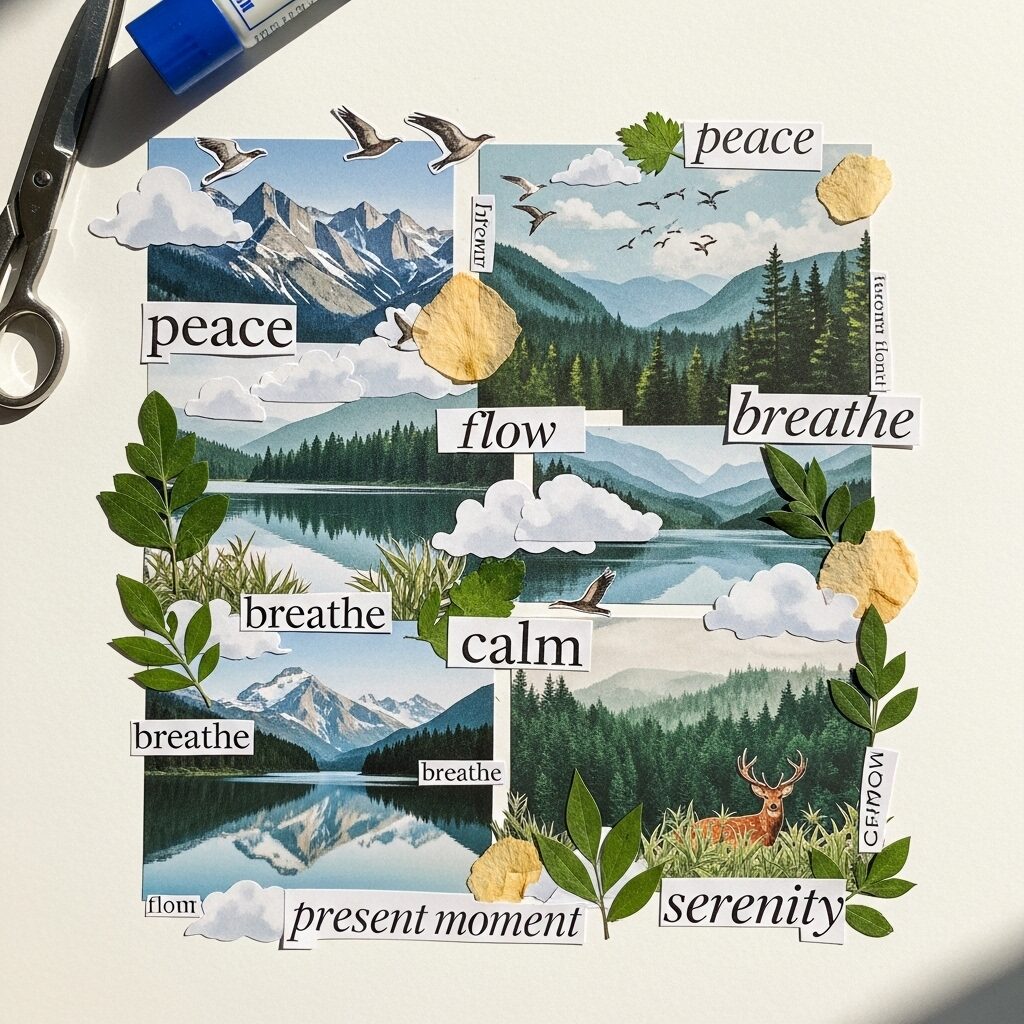
Materials: Paper, scissors, glue, old magazines Intention Focus: Clarifying values and maintaining positive focus
- Set a clear intention (like “cultivating peace” or “embracing creativity”)
- Look through magazines, cutting out images, colors, and words that resonate with your intention
- Arrange these elements meaningfully on your paper
- Glue them down to create a visual representation of your intention
This exercise makes abstract intentions concrete and helps shift your focus toward positive, desired qualities.
Common Challenges and Solutions
“I Can’t Stop Judging My Work”
This is where your intention becomes especially important. When self-criticism arises, gently return to your intention. If your intention was to “be playful,” remind yourself that play isn’t about perfection – it’s about exploration.
“I Keep Getting Distracted”
Distractions are normal. Each time you notice your mind wandering, simply return to your breath and your intention. Think of it like training a friendly puppy – gentle redirection, not harsh criticism.
“I Don’t Have Time for All This Setup”
The art of intention doesn’t require elaborate rituals. Even taking three deep breaths and silently stating your intention before you begin can make a significant difference.
The Role of Letting Go
Perhaps the most important aspect of the art of intention is learning to release attachment to outcomes. Once you’ve set your intention, trust the process and allow your creative exploration to unfold naturally. The magic happens not in controlling the result, but in aligning your inner state with your intention.
This doesn’t mean being passive – you’re still actively creating and making choices. But you’re doing so from a place of curiosity and openness rather than anxiety and control.
Building a Sustainable Practice
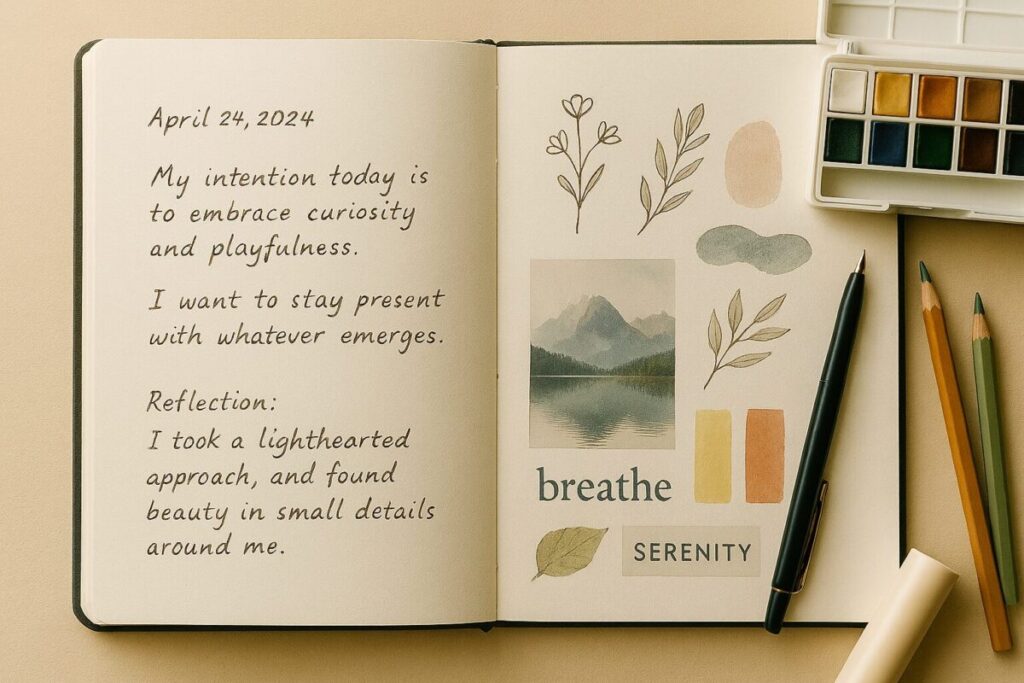
Start small and be consistent rather than trying to do everything perfectly from the beginning. Even five minutes of intention-based art-making can be more beneficial than an hour of stressed, goal-focused work.
Consider keeping a simple journal where you note:
- Your intention for each session
- What you noticed during the process
- How you felt afterward
- What you might want to explore next time
This reflection helps deepen your understanding of how the art of intention works for you personally.
Learning the art of intention transforms art-making from a performance-based activity into a practice of self-discovery and inner cultivation. By focusing on the quality of your presence and inner experience rather than external results, you create space for authentic creativity to emerge. Whether you’re seeking stress relief, self-expression, or simply the joy of creating, intention-based art practice offers a gentle yet powerful path toward mindful creativity that nourishes both your artistic skills and your overall well-being.
Frequently Asked Questions
What’s the difference between setting goals and setting intentions for art? Goals focus on specific, measurable outcomes (like finishing a painting by a certain date), while intentions focus on the quality of your inner experience and how you want to feel during the creative process.
How long should I spend setting my intention before creating art? Even 30 seconds to a minute can be enough. Take a few deep breaths, check in with what you need, and set a simple, positive intention for your session.
Can I change my intention during an art session? Absolutely! If you notice your needs shifting during your creative time, it’s perfectly fine to adjust your intention accordingly.
What if I forget to set an intention before starting? You can set an intention at any point during your creative session. Simply pause, take a breath, and reconnect with what you want to cultivate in that moment.
Do I need expensive art supplies to practice intention-based art? Not at all! You can practice with simple supplies like paper and pencils, or even non-art materials like junk mail for collages. The intention matters more than the materials.
Additional Resources
- American Art Therapy Association – Professional resources on therapeutic art practices
- Mindful.org – Articles on mindfulness and creativity
- The Center for Mind-Body Medicine – Research on mind-body practices including expressive arts
- Psychology Today Art Therapy – Understanding the psychological benefits of art
- National Center for Complementary and Integrative Health – Scientific research on meditation and mindfulness practices
Citations
- American Art Therapy Association. (2024). “The Therapeutic Benefits of Intention in Creative Practice.” Journal of Applied Arts & Health.
- Brown, L. & Johnson, M. (2023). “Neuroscience of Creative Intention Setting.” Creativity Research Journal, 35(2), 123-138.
- Chen, S. (2024). “Mindful Art-Making: A Meta-Analysis of Psychological Benefits.” Arts in Psychotherapy, 41(3), 67-82.

